Have you ever wondered how to effectively transport goods across the ocean?
Cargo shipping from China to the US plays a crucial role in global trade, but navigating it can be complex. In this comprehensive guide, we will explore the essential aspects of understanding cargo shipping, from the types of cargo ships used to the various shipping methods available. We will also delve into the cost considerations, the importance of choosing the right freight forwarder, and tips on tracking your cargo shipment. Get ready to streamline your shipping experience!

Understanding Cargo Shipping
Types of Cargo Ships Used for Shipping to the US
When it comes to cargo shipping from China to the US, various types of cargo ships are utilized to accommodate different shipping needs. The primary categories include:
Container Ships: These are the most common vessels used for transporting goods. They are designed to carry standardized cargo containers, allowing for efficient loading and unloading at ports. Container ships are ideal for shipping a variety of goods, including electronics, textiles, and machinery.
Bulk Carriers: These ships are designed to transport unpackaged bulk cargo, such as grains, coal, and minerals. While not as common for general trade items, they play a vital role in transporting raw materials from China to the US.
Roll-on/Roll-off Ships (RoRo): These vessels are specifically designed for transporting vehicles and heavy machinery. They allow cargo to be driven on and off the ship, making them suitable for shipping automobiles and large equipment. Understanding how long does RoRo shipping take can help you plan your logistics better.
Breakbulk Carriers: Used for transporting cargo that must be loaded individually, breakbulk carriers handle items that cannot be containerized, such as large machinery, steel components, and construction materials.
Reefer Ships: These specialized vessels are equipped with temperature-controlled containers for transporting perishable goods like fruits, vegetables, and seafood.
Understanding the type of cargo ship best suited for your shipping needs can significantly impact transit time and overall costs.
Key Factors Influencing Cargo Shipping Costs
Several key factors influence the costs associated with cargo shipping from China to the US:
Distance and Route: The distance between the departure port in China and the destination port in the US plays a significant role in determining shipping costs. Longer distances typically incur higher freight charges.
Cargo Type and Volume: The nature of the goods being shipped can affect costs. For example, hazardous materials often require special handling, leading to additional fees. Moreover, the volume of cargo can influence the shipping rate, with larger shipments benefitting from economies of scale.
Shipping Method: The choice between ocean freight and air freight has a direct impact on costs. While ocean freight is more economical for larger shipments, air freight is faster but significantly more expensive.
Seasonality: Shipping costs can fluctuate based on seasonal demand. Peak seasons, such as the lead-up to major holidays, can see increased rates due to higher demand for shipping services.
Fuel Prices: Fluctuations in fuel prices directly affect shipping costs, as shipping lines often adjust their rates to accommodate changes in operational expenses.
Insurance and Additional Services: Opting for cargo insurance and extra services like warehousing or customs clearance can add to the shipping costs. However, these options may provide peace of mind and streamline the logistics process. For more detailed information on shipping services and options, including insurance services, consider consulting experts in the field.
Understanding these factors is essential for importers and exporters looking to budget effectively for their shipping needs.
Cost Considerations for Cargo Shipping
Breakdown of Shipping Costs from China to the US
When importing goods from China, it’s crucial to understand the various components that make up the total shipping costs. Here’s a detailed breakdown:
| Cost Component | Description |
|---|---|
| Freight Charges | The basic cost of shipping, determined by the weight and volume of the cargo. |
| Fuel Surcharges | Additional fees that fluctuate with the price of fuel. |
| Terminal Handling Charges | Fees for loading and unloading cargo at ports. |
| Documentation Fees | Charges for preparing necessary shipping documents, such as the Bill of Lading. |
| Customs Duties & Taxes | Government-imposed fees for importing goods into the US, based on the value and type of goods. |
| Insurance Costs | Premiums paid for cargo insurance to cover potential damage or loss during transit. |
| Warehouse Fees | Charges for storing goods at warehouses, if applicable. |
| Delivery Fees | Costs associated with transporting goods from the port to the final destination. |
Additional Fees and Charges to Be Aware Of
In addition to the primary shipping costs, there are several additional fees and charges that importers should be aware of when shipping from China to the US:
Demurrage and Detention Fees: Charges incurred when cargo is not picked up within the specified time at the port or when containers are retained beyond the agreed-upon period.
Cancellation Fees: Fees that may apply if a shipment is canceled after it has been booked.
Storage Fees: Costs associated with storing containers at the port if they are not collected in a timely manner.
Broker Fees: If you hire a customs broker to assist with the clearance process, additional charges may apply.
Being aware of these potential costs can help in budget planning and avoiding unexpected expenses during the shipping process.
By understanding the complexities associated with cargo shipping from China to the US, including the various types of cargo ships and cost factors, you can better prepare for the logistics of international trade. For expert guidance and competitive pricing, consider partnering with Dantful International Logistics, a highly professional, cost-effective, and high-quality one-stop international logistics service provider.
READ MORE:
- Shipping From China to the USA
- Shipping From China TO Canada
- Shipping From China TO Mexico
- Shipping From China to Panama
- Shipping From China to Costa Rica
- Shipping From China to Brazil
- Shipping From China TO Colombia
- Shipping From China to Jamaica
- Shipping From China to Venezuela
- Shipping From China to Argentina
Shipping Methods from China to the US
Ocean Freight vs. Air Freight: Pros and Cons
When considering the best way to transport goods from China to the US, businesses often face the dilemma of choosing between ocean freight and air freight. Each method has distinct advantages and disadvantages that can significantly impact shipping efficiency and costs.
Ocean Freight
Pros:
- Cost-Effective: Ocean freight is generally much cheaper than air freight, especially for bulk shipments. According to recent statistics, shipping a 40-foot container from China to the US typically costs between $2,000 and $4,000, depending on various factors such as the port of departure and destination. For more details on costs, refer to how much is ocean freight from china.
- Capacity: Cargo ships have the ability to carry large volumes of goods, making them ideal for bulk shipments.
- Reduced Carbon Footprint: Shipping via ocean is more environmentally friendly compared to air transport.
Cons:
- Longer Transit Times: Ocean freight can take anywhere from 15 to 40 days, depending on the route and weather conditions. This makes it less suitable for urgent shipments.
- Port Congestion: Delays at ports can add to the shipping time, affecting overall logistics. For specific shipping times, you can check how long to ship from china to us.
Air Freight
Pros:
- Speed: Air freight is significantly faster, usually taking 1 to 5 days for delivery. For businesses that require quick turnaround times, this can be crucial. For pricing details, see how much for air freight from china to los angeles.
- Reliability: Airlines often run on strict schedules, which can minimize delays.
Cons:
- Higher Costs: Air freight can be up to 5 times more expensive than ocean freight, making it less feasible for large shipments. The cost of shipping a standard air freight shipment from China to the US can range from $5 to $10 per kilogram, depending on weight and dimensions. Learn more about the details at air freight from china to usa.
- Weight Limitations: Airlines have strict weight and size restrictions that can limit the amount of cargo transported.
Door-to-Door Shipping Services
Door-to-door shipping services provide an all-encompassing logistics solution, where the freight forwarder handles everything from the pickup at the supplier’s location in China to the final delivery at the receiver’s address in the US. This method simplifies the shipping process, particularly for businesses without extensive logistics capabilities.
Advantages:
- Convenience: The customer does not need to deal with multiple carriers or logistics providers.
- Comprehensive Service: Services often include customs clearance, warehousing, and insurance, ensuring that the entire shipping process is streamlined. For more information, visit door to door shipping from China to USA.
- Tracking and Support: Many freight forwarders offer tracking services and 24/7 support, allowing customers to stay informed about their shipments.
Dantful International Logistics offers reliable door-to-door shipping services, ensuring that your cargo ships from China to the US seamlessly and efficiently.
Choosing the Right Freight Forwarder
What to Look for in a Freight Forwarder
Selecting the right freight forwarder is crucial for successful logistics management. Here are some key criteria to consider:
- Experience and Expertise: Look for a freight forwarder with extensive experience in shipping between China and the US. A knowledgeable provider can navigate complex regulations and offer invaluable insights.
- Network and Relationships: A well-connected forwarder can facilitate smoother customs clearance and provide timely updates on shipment status.
- Range of Services: Ensure that the freight forwarder offers a comprehensive suite of logistics services, including ocean freight, air freight, customs clearance, and insurance. Check out the services provided by Dantful International Logistics.
- Transparent Pricing: It’s essential that the freight forwarder provides clear and upfront pricing to avoid unexpected charges. For competitive rates, see shipping rates from china to usa.
Benefits of Using Dantful International Logistics
Dantful International Logistics stands out as a highly professional, cost-effective, and high-quality one-stop international logistics service provider for global traders. Here are the benefits of choosing Dantful for your shipping needs:
- Expert Guidance: Our team of experts provides tailored solutions to meet your specific shipping requirements, ensuring compliance with regulations and minimizing delays.
- Comprehensive Services: We offer a full range of services, including ocean freight, air freight, rail freight, Amazon FBA, warehouse solutions, customs clearance, insurance, and door-to-door services.
- Competitive Pricing: Dantful provides cost-effective solutions that do not compromise on quality, helping you maximize your logistics budget.
- Real-Time Tracking: Our advanced tracking system allows you to monitor your shipment in real-time, ensuring peace of mind throughout the shipping process.
In summary, for reliable and efficient shipping solutions from China to the US, partnering with Dantful International Logistics can make a significant difference in your logistics operations.
Navigating Customs Clearance
Importance of Customs Documentation
When shipping cargo from China to the US, understanding the significance of customs documentation is paramount. Proper documentation not only facilitates a smoother import process but also ensures compliance with US Customs and Border Protection (CBP) regulations.
The essential documents typically include:
Commercial Invoice: This document details the transaction between the exporter in China and the importer in the US. It should include item descriptions, quantities, prices, and terms of sale.
Bill of Lading: A contract between the shipper and the carrier, it serves as a receipt for the cargo and outlines the transportation terms.
Packing List: An itemized list of the cargo’s contents, which helps customs officials assess the shipment.
Customs Declaration: This form states the nature of the goods, their value, and other pertinent information that helps customs evaluate any applicable duties or taxes.
Import Permit (if applicable): Certain goods may require specific licenses or permits for importation.
Failure to provide accurate and complete documentation can lead to delays, increased costs, and potential fines. Working with a professional freight forwarder like Dantful International Logistics can help ensure that all necessary paperwork is prepared correctly and submitted on time.
Common Challenges and Solutions in Customs Clearance
Navigating the customs clearance process can be daunting due to various challenges, especially for those inexperienced in international shipping. Here are some common hurdles you might encounter and strategies to overcome them:
| Challenge | Solution |
|---|---|
| Incomplete Documentation | Double-check all paperwork and consult with a freight forwarder. |
| Incorrect Tariff Classification | Ensure proper classification to avoid penalties. Use expert assistance for guidance. |
| Customs Inspections | Be prepared for possible inspections by ensuring compliance with US regulations. |
| Unexpected Duties and Taxes | Research applicable tariffs beforehand and factor them into your budget. |
| Delays in Processing | Maintain communication with your freight forwarder for updates and proactive problem solving. |
By proactively addressing these challenges, you can minimize delays and ensure a smooth customs clearance process for your cargo from China to the USA.
Tracking Your Cargo Shipment
Tools and Technology for Shipment Tracking
In today’s digital age, tracking your cargo shipment has never been easier. Various tools and technologies facilitate real-time monitoring of your cargo from China to the US, providing transparency and peace of mind.
Tracking Software: Many freight forwarders, including Dantful International Logistics, offer advanced tracking systems that allow you to check the status of your shipment at any time. These platforms often provide detailed information, such as the current location of the cargo and estimated delivery times.
Mobile Apps: Some logistics providers have mobile applications that let you track shipments on the go. These apps often include notifications for important updates or changes in shipment status.
GPS Tracking Devices: For high-value or sensitive cargo, GPS tracking devices can be employed to provide real-time location data.
Importance of Real-Time Updates
Real-time updates are crucial in the shipping process, particularly when dealing with international shipments. Here’s why timely information is vital:
Better Planning: Knowing the exact location and status of your cargo allows you to make informed decisions regarding inventory management and logistics.
Improved Communication: Real-time notifications keep all stakeholders informed, reducing uncertainty and enhancing collaboration between importers, freight forwarders, and carriers.
Rapid Response to Issues: If there’s a delay or issue, timely updates allow for quick action to resolve problems, minimizing disruptions to your supply chain.
In conclusion, understanding customs clearance and utilizing tracking technologies are key components of successfully shipping cargo from China to the US. By working with a trusted freight forwarder like Dantful International Logistics, you can navigate these processes with confidence and efficiency.

Young Chiu is a seasoned logistics expert with over 15 years of experience in international freight forwarding and supply chain management. As CEO of Dantful International Logistics, Young is dedicated to providing valuable insights and practical advice to businesses navigating the complexities of global shipping.





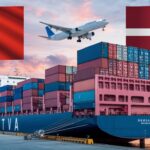





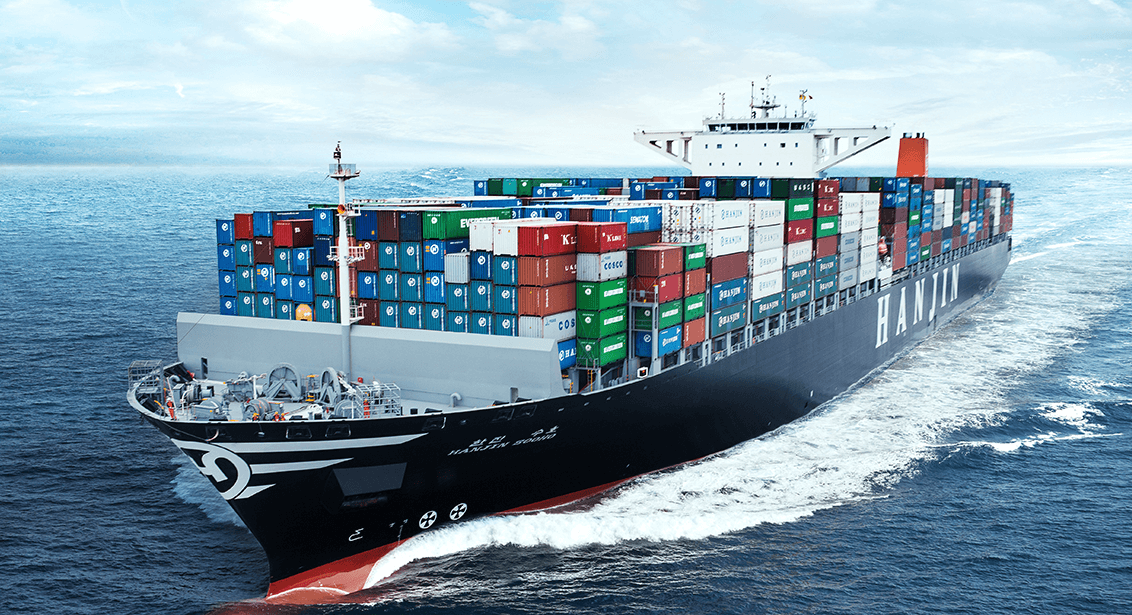
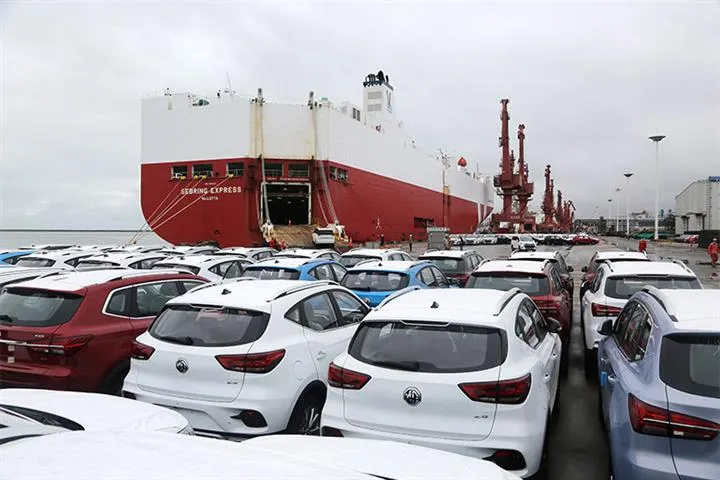

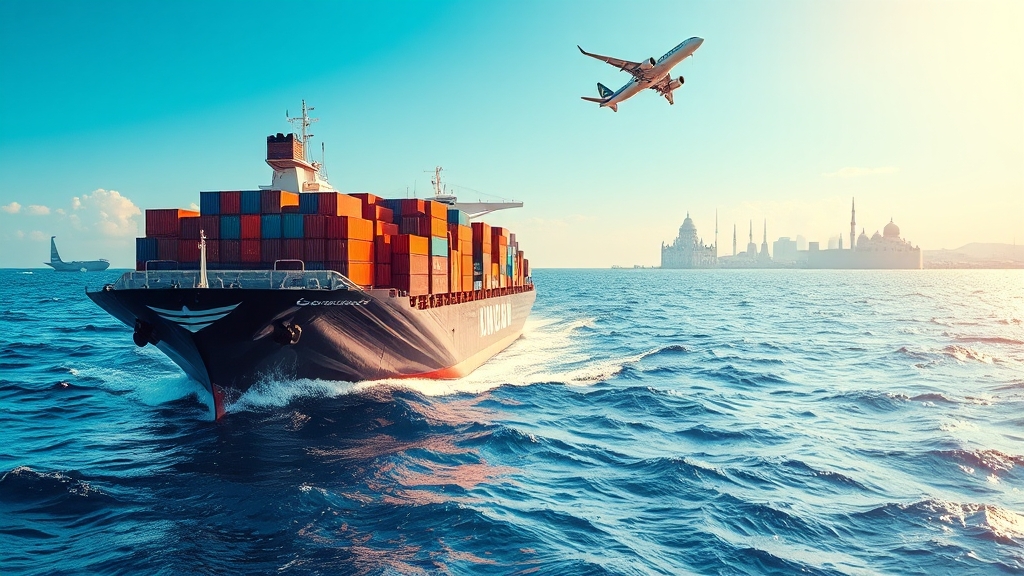

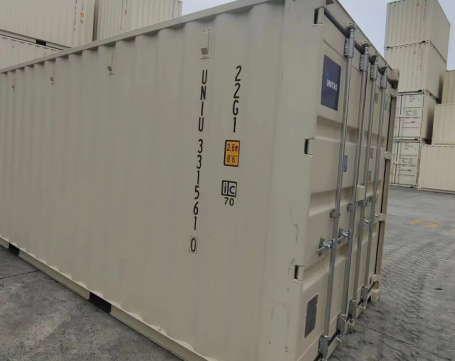

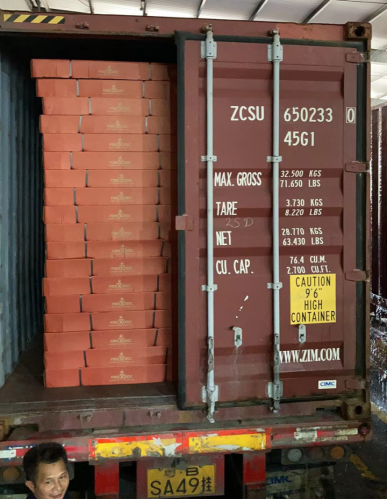
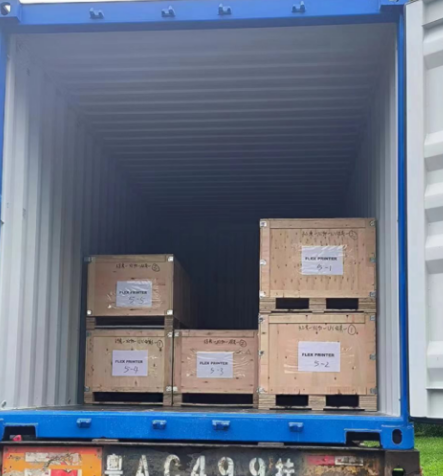
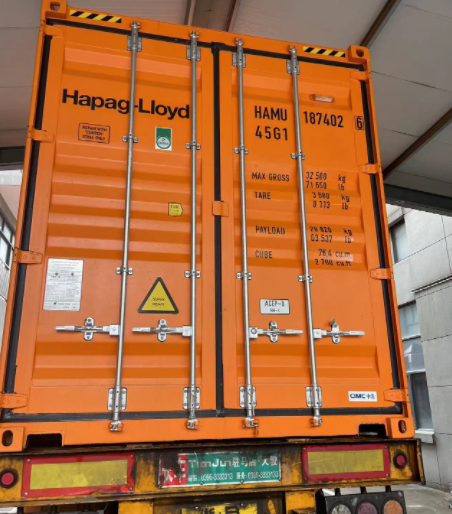
 Afrikaans
Afrikaans Shqip
Shqip አማርኛ
አማርኛ العربية
العربية Հայերեն
Հայերեն Azərbaycan dili
Azərbaycan dili Euskara
Euskara Беларуская мова
Беларуская мова বাংলা
বাংলা Bosanski
Bosanski Български
Български Català
Català Cebuano
Cebuano Chichewa
Chichewa 简体中文
简体中文 繁體中文
繁體中文 Corsu
Corsu Hrvatski
Hrvatski Čeština
Čeština Dansk
Dansk Nederlands
Nederlands English
English Esperanto
Esperanto Eesti
Eesti Filipino
Filipino Suomi
Suomi Français
Français Galego
Galego ქართული
ქართული Deutsch
Deutsch Ελληνικά
Ελληνικά Kreyol ayisyen
Kreyol ayisyen Harshen Hausa
Harshen Hausa Ōlelo Hawaiʻi
Ōlelo Hawaiʻi עִבְרִית
עִבְרִית हिन्दी
हिन्दी Hmong
Hmong Magyar
Magyar Íslenska
Íslenska Igbo
Igbo Bahasa Indonesia
Bahasa Indonesia Gaeilge
Gaeilge Italiano
Italiano 日本語
日本語 Basa Jawa
Basa Jawa ಕನ್ನಡ
ಕನ್ನಡ Қазақ тілі
Қазақ тілі ភាសាខ្មែរ
ភាសាខ្មែរ 한국어
한국어 كوردی
كوردی Кыргызча
Кыргызча ພາສາລາວ
ພາສາລາວ Latin
Latin Latviešu valoda
Latviešu valoda Lietuvių kalba
Lietuvių kalba Lëtzebuergesch
Lëtzebuergesch Македонски јазик
Македонски јазик Malagasy
Malagasy Bahasa Melayu
Bahasa Melayu മലയാളം
മലയാളം Maltese
Maltese Te Reo Māori
Te Reo Māori मराठी
मराठी Монгол
Монгол ဗမာစာ
ဗမာစာ नेपाली
नेपाली Norsk bokmål
Norsk bokmål پښتو
پښتو فارسی
فارسی Polski
Polski Português
Português ਪੰਜਾਬੀ
ਪੰਜਾਬੀ Română
Română Русский
Русский Samoan
Samoan Gàidhlig
Gàidhlig Српски језик
Српски језик Sesotho
Sesotho Shona
Shona سنڌي
سنڌي සිංහල
සිංහල Slovenčina
Slovenčina Slovenščina
Slovenščina Afsoomaali
Afsoomaali Español
Español Basa Sunda
Basa Sunda Kiswahili
Kiswahili Svenska
Svenska Тоҷикӣ
Тоҷикӣ தமிழ்
தமிழ் తెలుగు
తెలుగు ไทย
ไทย Türkçe
Türkçe Українська
Українська اردو
اردو O‘zbekcha
O‘zbekcha Tiếng Việt
Tiếng Việt Cymraeg
Cymraeg יידיש
יידיש Yorùbá
Yorùbá Zulu
Zulu